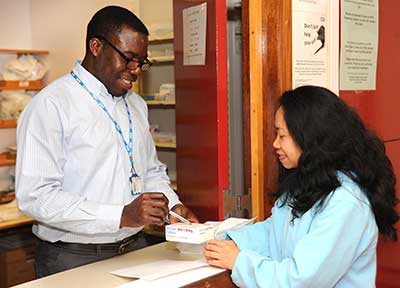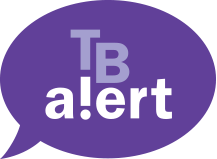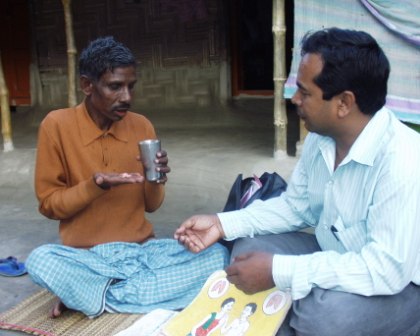TB treatment is effective. Worldwide, nearly 90% of cases of TB and 48% of cases of drug-resistant TB are cured.
However, treatment is not quick or easy. The length of treatment and side effects from the drugs used pose huge problems for TB patients and for global efforts to tackle the disease. Find out more under Global TB challenges.
 Standard treatment
Standard treatment
TB treatment lasts at least six months. Treatment for TB is usually a mixture of four antibiotics:
Isoniazid, Rifampicin and Pyrazinamide can come in the same tablet, called Rifater.
After two months of being on this treatment, patients may then be moved on to a course of two antibiotics for four months: Rifampicin and Isoniazid. These can come in the same tablet, called Rifinah.
Patients may begin to feel better within two weeks of beginning treatment, and people with pulmonary TB normally become non-infectious during this time. However, it’s vital that patients complete their treatment, so that the TB bacteria are completely killed off in the body. This prevents symptoms from returning and the risk of bacteria becoming drug resistant.
Side effects
With any medication, it is possible to experience side effects. Most are nothing to worry about and will go away. The TB nurse or doctor should advise patients of these before they start treatment.
Common side effects include:
- feeling sick or dizzy
- skin rashes
- pins and needles
- flu like symptoms
In a very few cases people may experience jaundice, which is the yellowing of skin or eyes. If this happens, stop taking your medication and tell your doctor straight away.
Patients should always discuss any side effects with their doctor, as it may be possible to change TB medication. If you would like to find out more about the side effects of specific drugs, please download our leaflet About your TB drugs.
Treating drug-resistant TB
Drug-resistant TB requires a longer course of treatment, with different combinations of drugs that can have more side effects. A patient will be tested to find out the exact course of treatment that should work for them.
Treating latent TB
Most cases of latent TB are not considered for treatment, as 90% of people with latent TB do not go on to become ill with active TB. Treatment is recommended for people whose immune systems are weaker as they are more likely to go on to develop an active infection. This includes children and people living with HIV.
The dormant bacteria present in cases of latent TB can be cleared completely using some of the same drugs used to treat active TB.
 Directly Observed Treatment (DOT)
Directly Observed Treatment (DOT)
TB treatment takes at least six months, patients need to take many tablets each day and side effects are common. This can be very difficult for people to manage, but it’s crucial that they take their treatment as prescribed and complete the course, to ensure they are completely cured and prevent them developing drug-resistant TB.
Directly Observed Treatment, or DOT for short, is a highly successful way of supporting people to complete their treatment. DOT involves TB nurses, outreach volunteers or trained volunteers meeting regularly with patients to watch them take their medication. This may take place at the patient’s home, in a clinic or pharmacy, or even a local shop. DOT ensures that the right medication is taken in the right doses, at the right time, for as long as it’s required.
In the UK, DOT is recommended for people who have difficulty keeping to a course of treatment – perhaps through lifestyle factors such as homelessness – and for people affected by MDR-TB.

 Directly Observed Treatment (DOT)
Directly Observed Treatment (DOT)